Contents
Guide

The Personality of Math
The Personality of Math
A Key to Learning and Teaching Math
Paul A. Wagner
Frank Fair
ROWMAN & LITTLEFIELD
Lanham Boulder New York London
Published by Rowman & Littlefield
An imprint of The Rowman & Littlefield Publishing Group, Inc.
4501 Forbes Boulevard, Suite 200, Lanham, Maryland 20706
www.rowman.com
86-90 Paul Street, London EC2A 4NE, United Kingdom
Copyright 2022 by Paul A. Wagner and Frank Fair
All rights reserved . No part of this book may be reproduced in any form or by any electronic or mechanical means, including information storage and retrieval systems, without written permission from the publisher, except by a reviewer who may quote passages in a review.
British Library Cataloguing in Publication Information Available
Library of Congress Cataloging-in-Publication Data Available
ISBN 978-1-4758-6297-3 (cloth : alk. paper) | ISBN 978-1-4758-6298-0 (pbk. : alk. paper) | ISBN 978-1-4758-6299-7 (ebook)
 The paper used in this publication meets the minimum requirements of American National Standard for Information SciencesPermanence of Paper for Printed Library Materials, ANSI/NISO Z39.48-1992.
The paper used in this publication meets the minimum requirements of American National Standard for Information SciencesPermanence of Paper for Printed Library Materials, ANSI/NISO Z39.48-1992.
There is intense interest in making STEM (science, technology, engineering, and mathematics) studies more potent than ever. Developments in curricular content, instructional strategies, and evaluation of success are looked at afresh. Even history and philosophy are recognized as critical to the new STEM awareness, as in the coalition of teacher training programs known as UTeach. By discussing the personality of mathematics, we bring high school teachers and lower division college instructors to an awareness of how they can address these new concerns. We do this by showing them that disciplines have personalities, much as humans and human communities do. This attention to personality is most especially needed in math education.
We accept that math education must contain indoctrinative strategies which instill math facts in students. We also recognize the need for students to have opportunities for hands-on experiences in applying math. But to help students become very good at math or even truly just good at math , much more is required. Students must learn to pass through thresholds that will bring them into the lively and animated experiences of mathematical reflection and investigation.
Imagine the goal of leading students to becoming very good at mathor better! This becomes the platform supporting all advanced math study, both applied and purely theoretical. This platform sits on three legs, much like the seat of a three-legged stool. One leg of the stool focuses on instilling well-confirmed facts and skills in the minds of students at every level of achievement. A second leg of the stool engages students in hands-on operation of mathematical tools within one of the families of applied mathematical operations. Both legs are essential to students becoming good at math or better. But to truly succeed, for students to become optimally competent, a third leg of the stool must be recognized, shaped, and reinforced.
The third leg of the stool comprises the personality of mathematics, which brings in awareness of the history, philosophy, and psychology of math. This is the leg of the platform that this book addresses. Without a focus on this support of the platform, there is little else that can substantially enliven learner efforts to advance in math understanding. There would be much less zeal for pressing on into the math wildernesses themselves, for exploring and revealing new ideal truths and astute applications, applications that have the power to reveal the hidden geometry of all of reality and much of human experience.
Take the journey seriously and sustain students courage with this third leg of the platform structure, and then they will succeed in deepening their math understanding and do so with well-earned pride of accomplishment.
Paul Wagner
First and foremost, I want to acknowledge my co-author. He is so much more than an able philosopher and scholar. He has an uncommon sense of compassion and duty toward all he encounters. Without going into detail, he is the man every spouse and family would cherish as one of its own. In addition, there is a reason why he is a distinguished emeritus from his university. Beyond scholarship, he has won teaching awards that give him an uncommon instinct in what we write about here. His teaching and scholarship have crossed the disciplinary boundaries of four colleges within the university. He has carried disproportionately heavy loads of editing responsibilities for journals. More than a pleasure, it has been an honor to work with him.
Second is the deceased polymath Patrick Suppes of Stanford University. Suppes directed doctoral students in electrical engineering, mathematics, philosophy, psychology, and education. It seemed that within a few minutes Suppes could ask the most penetrating questions and drain my mind of anything I ever learned about a given subject. Known most famously as the Father of Computer-Assisted Instruction, Suppes was a cross-over mathematician from very nearly every angle imaginable. He was a palpable model for nearly every chapter in this book.
Third, Hilary Putnam was a giant in mathematical philosophy. Even as he aged, his eye for even the slightest absence of rigor was impeccable. Math is often said to be a young persons game, but one could see no instance of that in Putnams ability to see the frayed arguments in any argument about logical truth. As much as anything, I remember Putnam for his gentle reassurances encouraging me that I was on the right track for this or that claim. Putnams educational experience highlights so much of what this book is about. In Putnams autobiographical essay included in The Philosophy of Hilary Putnam , the Library of Living Philosophers volume dedicated to him (2015b), Putnam describes how his early ambitions in mathematics were nearly thwarted when he was an undergraduate at University of Pennsylvania considering math as a possible major.
Putnam deferred taking math courses at an undergraduate level because he was terrified of the idea of solving problems under pressure (2015b, p. 13). Yet his personality was aligned with the personality of math, just not with the practice of math instruction. Nonetheless, as we suggest in this book, personality alignment between mathematics and its champions trumps simply being good at math on standardized tests. Putnam went on to publish over thirty articles in professional mathematics journals, became a co-founder of formal learning theory, and supervised mathematical dissertations in the math departments of both Harvard and MIT.
Both Suppes and Putnam instance what we have been illustrating all along about the alignment of mathematics and the personality of its champions. This alignment is not something that can be reliably captured through standardized testing, and that should be evident to anyone studying math today (Morrison, 2022, pp 102104).
Frank Fair
Let me reciprocate the generous words of my co-author, Paul Wagner, by acknowledging the simple fact that the idea for this book and the great majority of its substance is due to his work. The breadth of his reading and his ability to synthesize a vast amount of diverse information is, frankly, astonishing to me. And his passion for educational reform is deep and genuine. I am glad to be able to render some assistance along the way.

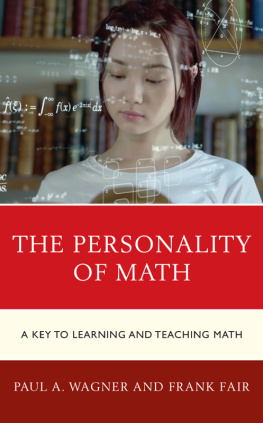
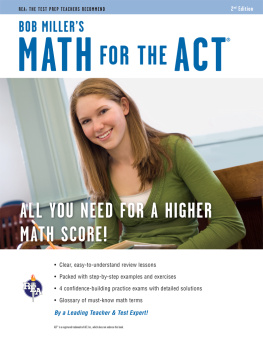
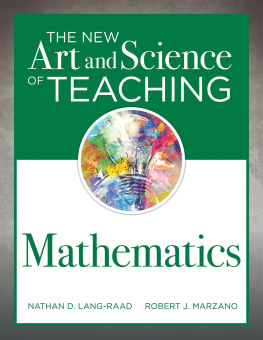
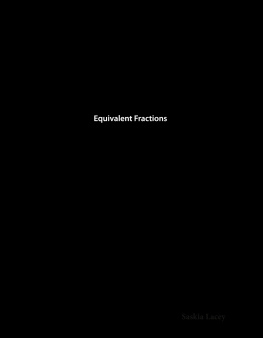

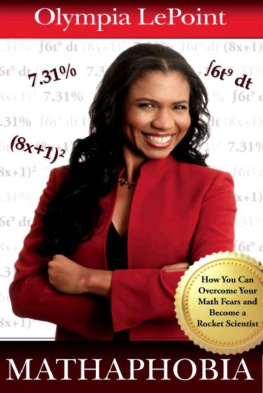
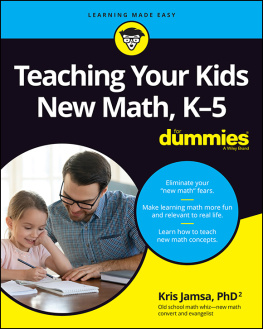

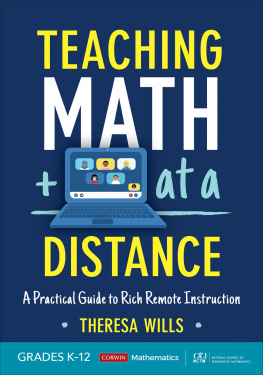
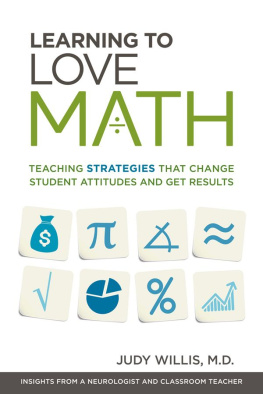
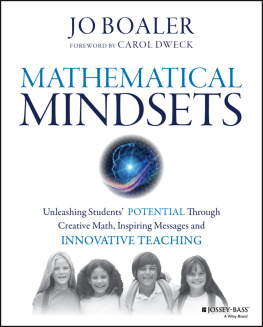
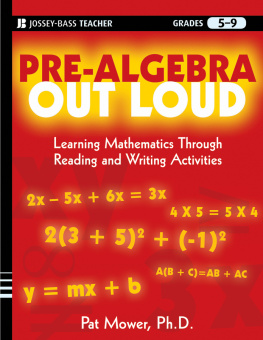
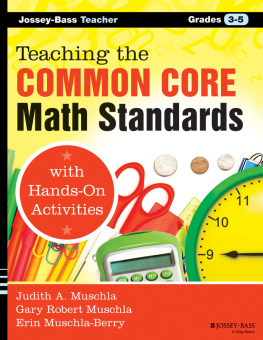

 The paper used in this publication meets the minimum requirements of American National Standard for Information SciencesPermanence of Paper for Printed Library Materials, ANSI/NISO Z39.48-1992.
The paper used in this publication meets the minimum requirements of American National Standard for Information SciencesPermanence of Paper for Printed Library Materials, ANSI/NISO Z39.48-1992.